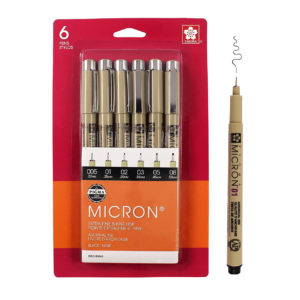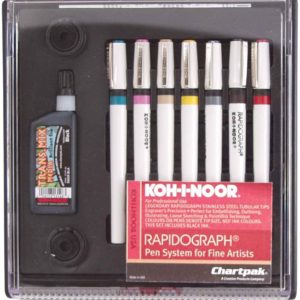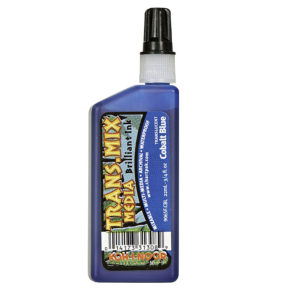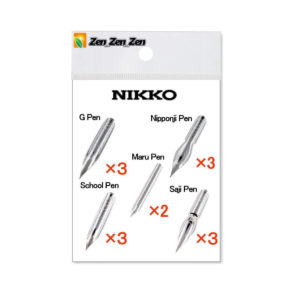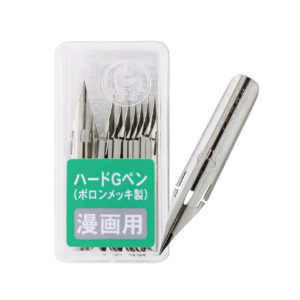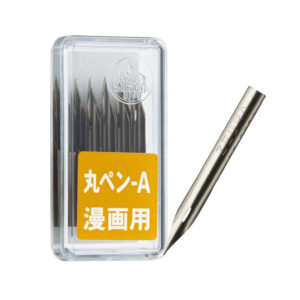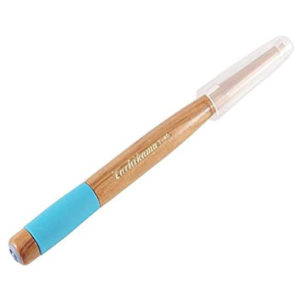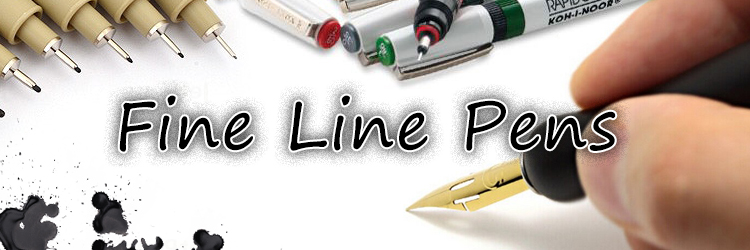
Pen and ink is the first medium that I really became obsessed with. I love it’s ability to create and emphasize flow in artworks. I regularly use line path and direction to bring out the hidden energy in a scene or suggest dimension, and pointillism for describing all that is detailed and subtle. It’s a great medium for someone like me who loves detail and tedious work.
There are a lot of pens out there to choose from and I use a few different types for different reasons. For the most part, I only work with fine point pens. If a bigger area needs full coverage ink, I use ink and brush.
The following is a list of my favorite 3 types of fine liners.
For disposable pens I usually just go with the ever popular Sakura Pigma Micron. These are the pens I started with when getting into pen and ink, and they’re still a solid choice. They are dependable, pigmented archival ink pens which are affordable and easy to find at almost any place art supplies are sold. Their nibs can be fragile, if you press down too hard while drawing you can push it in and ruin it. I did that many times before finally training myself to have a lighter more gentle grip (which is really for the best anyway). The ink flow is more dry than the other pens I will mention, which makes it good for beginners because it makes it harder to accidentally smudge. They’re definitely a must try for anyone getting into ink drawing.
Getting Fancy.
Eventually I got curious and tried out technical pens which come in self fill or cartridge fill types. Biggest benefit to these puppies for me was the deliciously juicy dark black lines you can get even with the finest nibs! I used them for a really long time and I still love the satisfyingly uniform lines they make. The freshest Micron is just not nearly as louchously dark as a tech pen.
Oh, but I got me a couple complaints too though. For one, they were made for drafting, not art so you have to use them as straight up and down as possible. I don’t know about you, but for me it feels easier and more comfortable to be able to hold a pen at an angle. But holding them at an angle both impedes optimal flow and makes it easier to accidentally bend the nib which can make it leaky or clogged, usually with little hope of being able to be fixed. The other huge downside is you have to keep the nibs clean and never let the ink dry out because it can be a pain to revive them when that happens.
You really have to watch out and take care of them, they are very expensive! If you’re good at that sort of thing these may be for you.
Rotring Rapidograph .18 and .25 ended up being my favorites. They work on ink cartridge. I find as long as I use them every couple of days, they’ll continue to work and don’t clog or dry up.
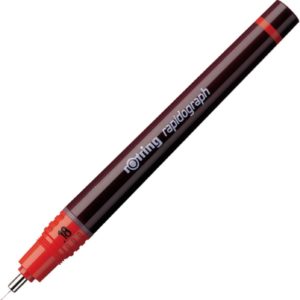
Rotring Rapidograph .18
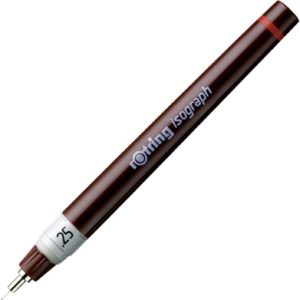
Rotring Rapidograph .25
Koh-I-Noor is another great brand, and for those looking for more flexibility when it comes to ink, these self-fills are fantastic.
I highly recommend using their Trans Mix Media inks. They work great in the pens, they’re easy to mix if you want to make your own colors and they even work just fine for ink painting.
My current favorite?
The pen I use the most these days is a dip pen. It’s not quite as easy to make uniform lines, but it can be done well with practice. I enjoy that I have the option to have a more varied line, which feels a little more human and expressive.
There are many reasons to love the dip pen. They’re inexpensive. I suppose one could spend a fortune on an ink collection for your dip pens, but overall, dip pen is an inexpensive way to go as compared with something like tech pens. They’re flexible. Use any ink you want pretty much, and even paint (as long as it is thinned to the right consistency). Easy Cleanup. I give the nib a rinse in water and then a wipe and I’m done. Pretty easy!
The down sides for me is it’s not the most convenient for any kind of on-the-go drawing. Can be messier than other pens, all that liquid ink can get crazy. One tends to get accidental ink blobs on their art and inky fingers more than with other drawing methods.
There are various types of nibs of course. I really like Manga nibs in particular for drawing. Beginners may want to try a variety set, to find a personal fave.
I find personally I only really need G and Maru nibs. G is an all around great nib, precise with a bit of flex for some line width variation.
Maru is a much more firm nib with little flex, great for finest details.
For a nib holder, this Tachikawa one works great. Although it is very easy to switch nibs, I use a separate holder for each type of nib so i don’t have to bother.
Since you can use almost any ink (or ink consistency paint) in a dip pen, I don’t have one strong favorite thing to use since there are so many good choices, but I do probably have a lot of opinions about various inks so I think I’ll make another post just about those.
If you have any questions about pen and ink supplies or methods, feel free to ask or comment below.

